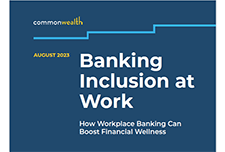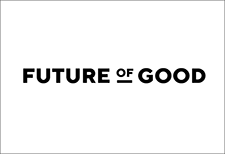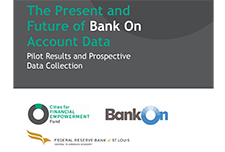Discover financial empowerment resources
Discover financial empowerment resources
At first glance, the latest FDIC National Survey of Unbanked and Underbanked Households findings are encouraging: rates of un- and underbanked households reached historic lows after trending downward for the last decade. Yet, a lack of access to quality banking remains a problem for nearly 25...

Research shows that 15 percent, or close to five million Canadians, are underbanked, and three percent are completely unbanked, meaning that they have very limited or no access to financial services within the traditional banking sector. Ironically, underbanked individuals often come from...

Bank On coalitions are locally-led partnerships between local public officials; city, state, and federal government agencies; financial institutions; and community organizations that work together to help improve the financial stability of unbanked and underbanked individuals and families in their...

Bank On coalitions are locally-led partnerships between local public officials; city, state, and federal government agencies; financial institutions; and community organizations that work together to help improve the financial stability of unbanked and underbanked individuals and families in their...

This brief and an accompanying interactive map were commissioned by the New York City Department of Consumer Affairs’ Office of Financial Empowerment. The brief provides information on how many New Yorkers are unbanked and underbanked, recognizing their links to financial health. It also...
In order to monitor the financial and economic status of American consumers, the Federal Reserve Board conducted the third annual Survey of Household Economics and Decisionmaking in October and November 2015. This survey provides insights into the well-being of households and consumers, and...
The report begins by defining and quantifying Canadian financial exclusion and then presents various theories offered to explain it. It then proceeds to provide a set of suggestions as to how banking services can become more relevant for low-income households. Finally, it runs through a set of...
Opening a bank account is the first step towards financial inclusion and building long-term wealth. Yet nearly 9 million U.S. households are unbanked, meaning no person in the household holds a bank account. In addition, 25 million households are underbanked, meaning that they have a checking or...
Despite the fact that, with only basic identification, all Canadians have the legal right to open a bank account, there has been an explosive growth in fringe financial institutions (FFIs) over the past decade or so which offer financial services such as cheque cashing, payday loans, and income...
We experimentally test the impact of expanding access to basic bank accounts in Uganda, Malawi, and Chile. Over two years, 17%, 10%, and 3% of treatment individuals made five or more deposits, respectively. Average monthly deposits for them were at the 79th, 91st, and 96th percentiles of baseline...
Deficits in appropriate and affordable housing may also interact with other forms of exclusion, creating cycles of increased exclusion and risk. In the current study, we consider the interaction between homelessness and access to mainstream financial services. The conceptual model proposes that,...
This book is the first major study of financial education at the international level. It highlights the economic, demographic and policy changes that make financial education increasingly important, identifies and analyses financial literacy surveys in OECD countries, describes the different types...
The Citywide Financial Services Study provides key data about financial behaviour and access to financial services among New Yorkers with low and moderate incomes. The purpose of the study was to quantify the unbanked marketplace in New York City, identify critical indicators of financial behaviour...
The findings in this report from the National Asset Scorecard for Communities of Color (NASCC) survey reveal major disparities in wealth accumulation across various racial and ethnic groups in Los Angeles. Our analysis shows that with respect to types and size of household assets and debt, there...
The widening wealth gap in the United States is a worrisome sign that millions of families nationwide do not have enough in assets to offer better opportunities for future generations. On the basis of data collected using the National Asset Scorecard for Communities of Color (NASCC) survey, we...
The FDIC recognizes that public confidence in the banking system is strengthened when banks effectively serve the broadest possible set of consumers. As a result, the agency is committed to increasing the participation of unbanked and underbanked households in the financial mainstream. The FDIC...
This paper examines small-dollar credit alternatives to the current payday-loan product in the province of Alberta. While we recognize that most people have credit requirements from time to time, the unbanked and underbanked who can least afford to do so are forced to obtain credit under the...
For unbanked and underbanked borrowers, ncome supports, budgeting guidance, and additional savings will not entirely fill the need that credit satisfies. First, well-structured credit can support a household’s ability to save. Second, building a credit history is a critical financial asset in its...
The Center for Financial Services Innovation (CFSI) has conducted an investigation into the amounts that prepaid cardholders spend each month to conduct essential financial transactions, and compared that to the amounts that they would spend if they remained underbanked or used checking accounts...
For Tax Year 2002 (the latest for which IRS data is available), nearly 70 million tax filers with incomes under $30,000 received more than $82 billion in federal tax refunds – and more than 21 million filers received nearly $38 billion in the EITC.2 Total refunds in the U.S. exceed $200 billion...
This brief proposes a cohesive strategy to increase bank account ownership among low and moderate-income households: First, and most importantly, Congress should enact a “First Accounts Tax Credit” to financial institutions to develop and deploy electronically- based banking products for...
